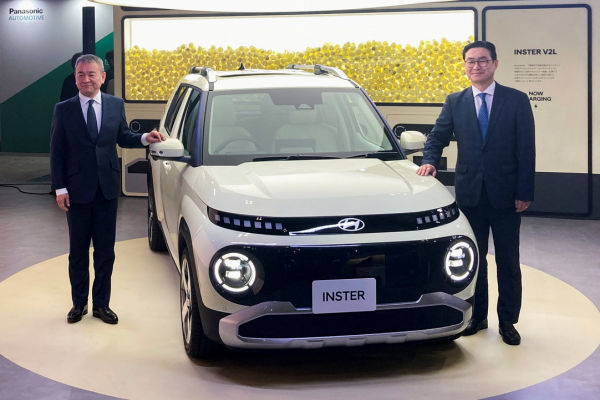The transformational effects of digital advertising

Roger Mazzella at The Qt Company describes how digital advertising is transforming cross-sector consumer engagement
Talk of the looming global recession has begun to gain traction in recent months. As the economic outlook darkens, businesses continue to struggle to adapt to the changing behaviors of consumers in the aftermath of the Covid-19 pandemic.
There are some bleak statistics. 12,200 stores closed their doors in the US throughout 2020, with a staggering 630 declaring bankruptcy, and further data released by the world advertising research center (WARC) revealed that in-store footfall had fallen by almost half during the Black Fridays sales, whilst eCommerce sites saw sales increase by over 40%.
Many businesses are using digital advertising to lure consumers back into physical environments. The pandemic led to a steep rise in businesses turning to eCommerce platforms, with 60% of US consumer interactions with businesses being online.
Businesses have a huge opportunity and can embrace this societal shift by targeting software code for digital adverts. Internet of Things (IoT) devices, such as escalators and kiosks, provide opportunities to diversify digital advertising approaches to improve revenues in this competitive commercial landscape.
Digital advertising also empowers equipment manufacturers to distribute ad revenue as they see fit, either by subsidizing its own investment or that of its customers. In doing so, they can create major differentiator against their competitors by not only selling a product, but a potential new revenue stream.
Fitness: Active consumer identification
When the Covid-19 pandemic hit, and people’s exercise options were restricted, home workout equipment sales increased. Research by McKinsey found that monthly consumer spending on fitness equipment rose by 5%, and spending on paid mobile applications increased by 10%.
At the same time, 70% of consumers admitted to missing the gyms as much as they missed their relatives. As gym equipment typically has razor thin profit margins this is unsurprising. This could well be set to continue, but equipment manufacturers can provide gyms with additional revenue streams, with digital advertising embedded within the equipment.
Gyms must focus on developing a bigger and better offering to improve customer experience. Digital advertising provides an avenue to meet this demand - various products and services, such as branded attire, nutrition plans, tailored classes and workouts can be pitched to consumers while they are training. Satisfying both manufacturers and customers by offering interesting content and a more engaging customer experience, along with increased revenue stream opportunities.
Hospitality: Touch screen customer experience
The hospitality sector suffered more than most industries during the pandemic. 26,160 restaurants and 5,454 bars and nightclubs closed across the US, with an average of 53% resulting in permanent closure. Those that have survived the lockdown periods are now faced with the challenge of regaining their customer base.
Again, digital advertising offers a fresh approach that could reinvigorate the sector. Advertising is placed in kiosks, lifts, and vending machines, for example. But interactive advertising, tailored to the consumer at a point-of-sale, can be more effective than a static billboard for example.
And the recent rise of ordering via an establishment’s mobile application also provides an excellent opportunity for digital advertising.
Modern elevators often come equipped with digital features, and screens that can be programmed with messages and digital adverts, offer a venue the opportunity to show consumers different products or activities they can engage with, with minimal effort required, and while being transported.
By creating a single user interface (UI) that merges the controls, organizations can provide digital advertising space for themselves and others, with this offering a further revenue stream. Consolidating all of these elements into one screen can bring about tremendous hardware yields, and installation and maintenance cost savings, all whilst maximizing digital advertising revenue.
Self-service kiosks in particular provide an interesting but fruitful opportunity to engage customers through digital advertising. They redefine the guest experience, and are designed to offer hotel guests a contactless journey at any time of day.
The kiosk solution helps increase guest satisfaction and allows for incremental revenue thanks to built-in upselling tools that make consumers feel they have received good value for money. Machine manufacturers can provide local and global businesses with advertising space, and therefore revenue growth potential.
Smart mobility: The software advantage of digital advertising in automobiles
The new ‘experience ecosystem’ provides media companies and marketers with the opportunity to actively develop in this area. Electric-powered mobility often features multimedia screens offering companies ample space to advertise.
The micro-targeted marketing opportunities in this space are copious given the adverts will be moving with the consumer, offering them longer to browse related products. Though drivers and passengers are targeted, the industry must address the challenge of creating a consistent user experience that consumers are satisfied with.
The automotive industry continues to develop software to enhance the consumer experience and increase sales. But there are other uses, too, including eye tracking, facial recognition, AR technology and vehicle sensors that can align to deliver a personalized experience for the consumer.
But to monetize these opportunities, manufacturers currently need to leverage third-party software that is not always natively compatible with the code they are using. Embedded advertising would enable them and monetize natively, using only one code-base.
Embedded in-vehicle-infotainment (IVI) should feel like a natural extension of the product and users should feel a connection with the device to make using it a comfortable, reliable experience. Utilizing a single-code base when incorporating a digital advertising solution to a multimedia screen can create a seamless experience for consumers, increasing the likelihood of improved sales figures.
Manufacturers across industries – smart-mobility, fitness and hospitality, and more – face the issue of cost efficiency. The challenge remains to provide and maintain monetized solutions, while making use of a single-code base to minimize development costs and the time to market.
Simplifying the development of products that will make use of digital advertising for monetization can help industries improve their revenue and customer engagement, taking their business to the next level.
Roger Mazzella is Senior Product Manager at The Qt Company
Main image courtesy of iStockPhoto.com

Business Reporter Team
Most Viewed
Winston House, 3rd Floor, Units 306-309, 2-4 Dollis Park, London, N3 1HF
23-29 Hendon Lane, London, N3 1RT
020 8349 4363
© 2025, Lyonsdown Limited. Business Reporter® is a registered trademark of Lyonsdown Ltd. VAT registration number: 830519543





